Abstract
A monoclonal antibody (BA11) has been produced against Clostridium botulinum type A neurotoxin by the fusion of myeloma cells (P3 NS1/1-Ag4-1) with spleen cells from BALB/c mice immunized with botulinum type A neurotoxoid. The antibody bound specifically to botulinum type A neurotoxin, showing no cross-reactivity with types B and E botulinum toxins or with any of several other bacterial toxins tested. The monoclonal antibody did not bind to botulinum type A neurotoxin which had been denatured with sodium dodecyl sulfate and bound only weakly to each of the separated heavy and light subunits of the neurotoxin, suggesting a conformational requirement for the antigenic determinant of the antibody. A sensitive immunoassay for C. botulinum type A toxin with monoclonal antibody BA11 in conjunction with an enzyme amplication system has been developed which allows detection of 5 to 10 mouse 50% lethal doses ml-1 of purified neurotoxin. The assay was equally sensitive when applied to the detection of crude toxin in food stuffs; the average value for the minimum level of detectable toxin in extracts of tinned salmon or corned beef was 9 +/- 3.1 mouse 50% lethal doses ml-1.
Full text
PDF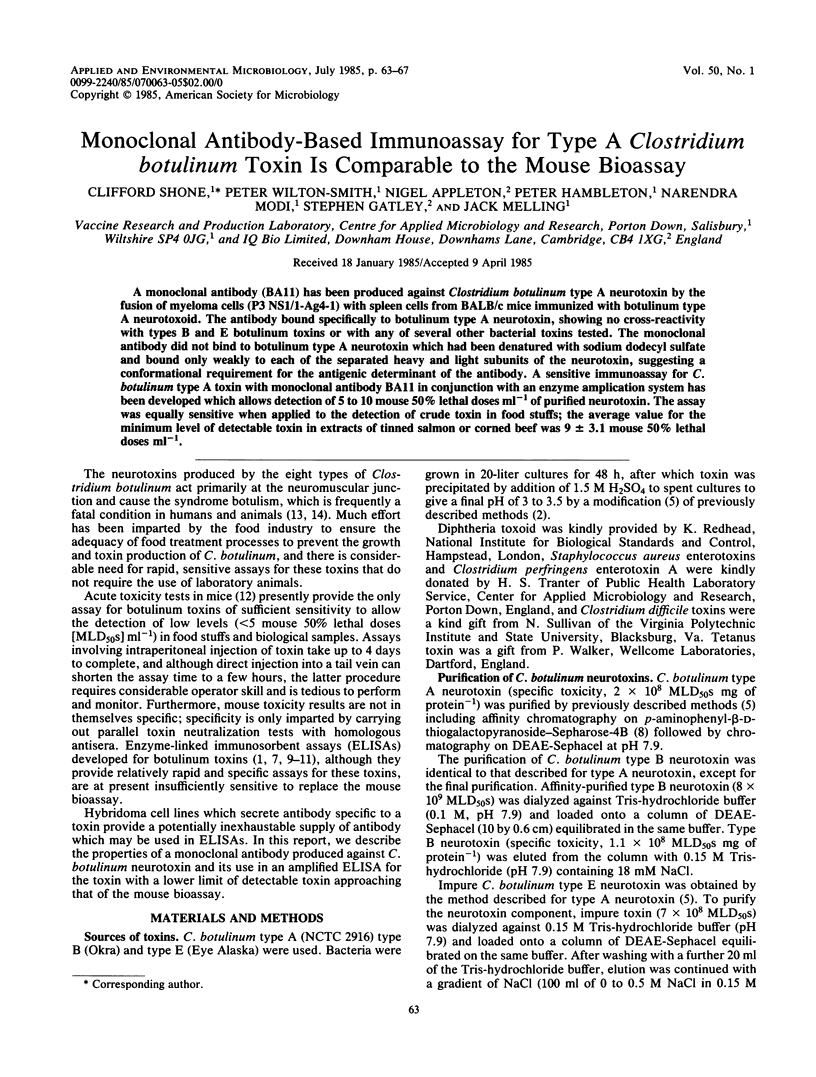
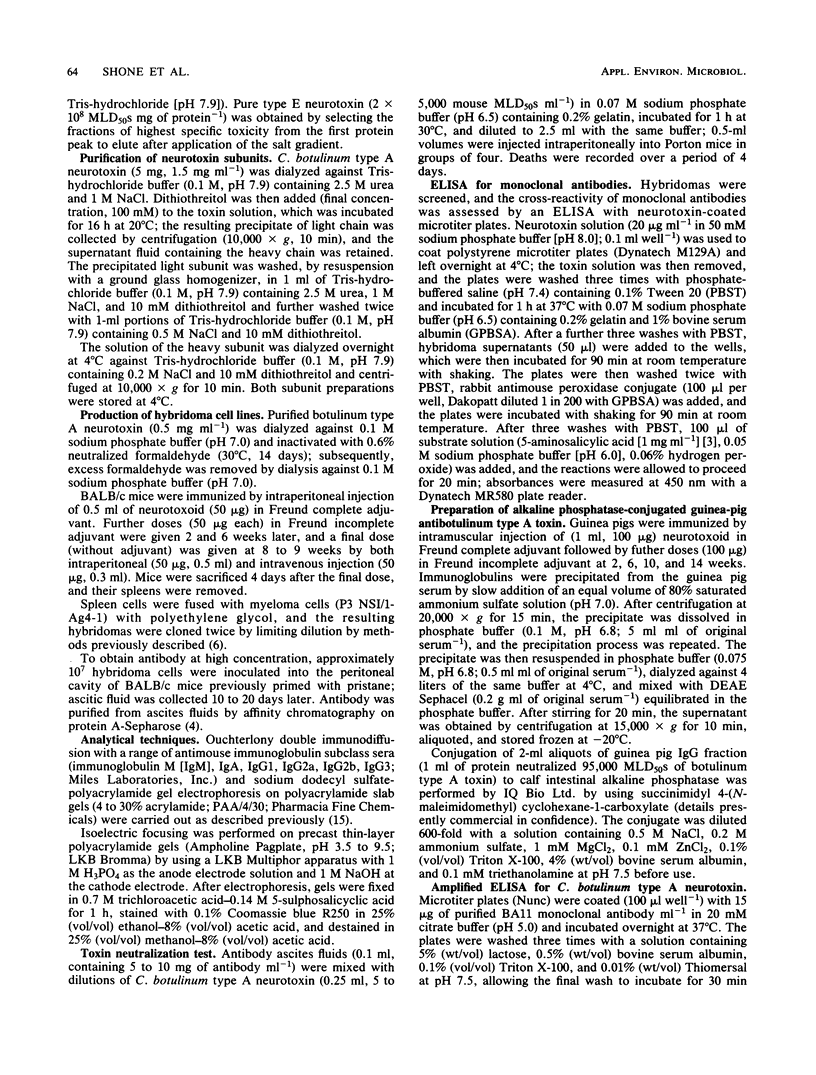
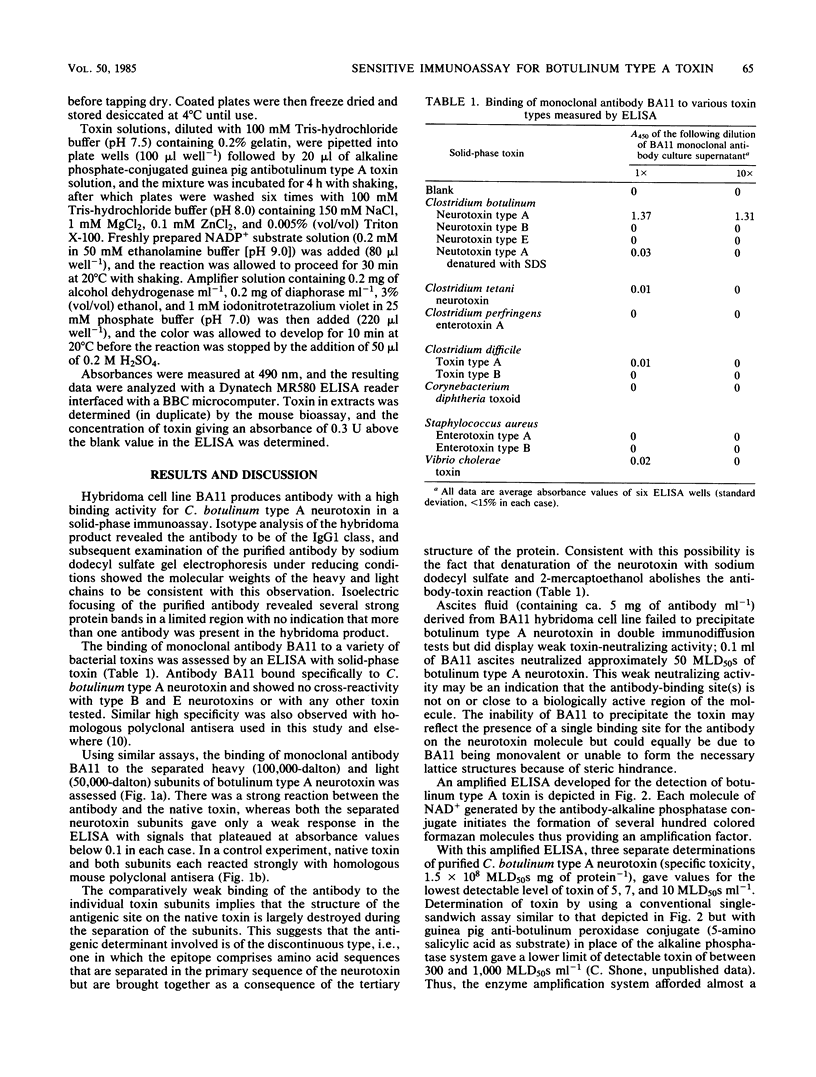
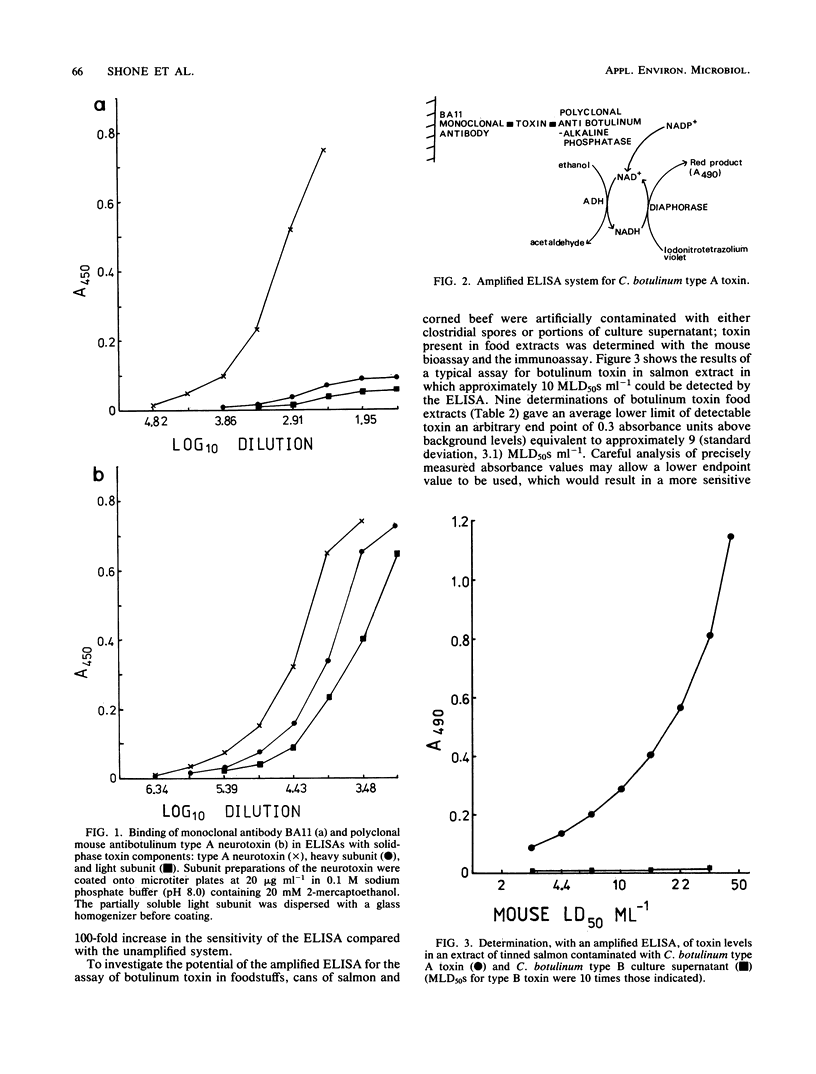
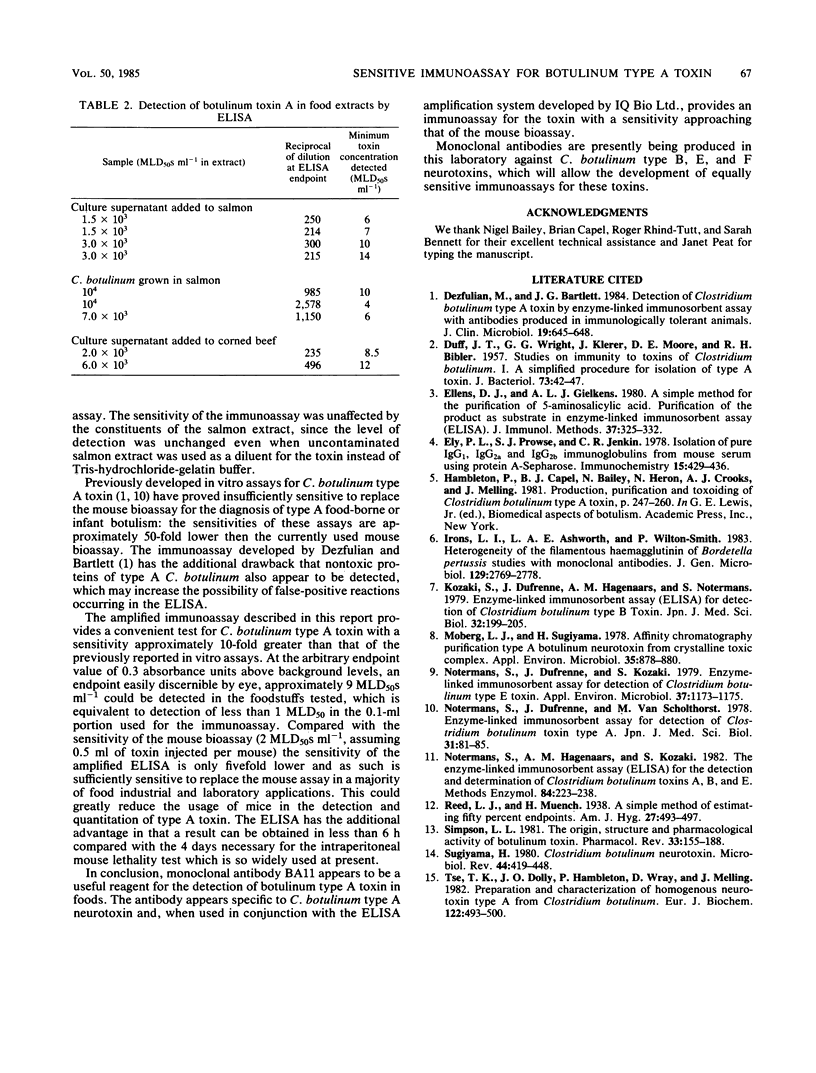
Selected References
These references are in PubMed. This may not be the complete list of references from this article.
- DUFF J. T., WRIGHT G. G., KLERER J., MOORE D. E., BIBLER R. H. Studies on immunity to toxins of Clostridium botulinum. I. A simplified procedure for isolation of type A toxin. J Bacteriol. 1957 Jan;73(1):42–47. doi: 10.1128/jb.73.1.42-47.1957. [DOI] [PMC free article] [PubMed] [Google Scholar]
- Dezfulian M., Bartlett J. G. Detection of Clostridium botulinum type A toxin by enzyme-linked immunosorbent assay with antibodies produced in immunologically tolerant animals. J Clin Microbiol. 1984 May;19(5):645–648. doi: 10.1128/jcm.19.5.645-648.1984. [DOI] [PMC free article] [PubMed] [Google Scholar]
- Ellens D. J., Gielkens A. L. A simple method for the purification of 5-aminosalicylic acid. Application of the product as substrate in enzyme-linked immunosorbent assay (ELISA). J Immunol Methods. 1980;37(3-4):325–332. doi: 10.1016/0022-1759(80)90318-x. [DOI] [PubMed] [Google Scholar]
- Ey P. L., Prowse S. J., Jenkin C. R. Isolation of pure IgG1, IgG2a and IgG2b immunoglobulins from mouse serum using protein A-sepharose. Immunochemistry. 1978 Jul;15(7):429–436. doi: 10.1016/0161-5890(78)90070-6. [DOI] [PubMed] [Google Scholar]
- Irons L. I., Ashworth L. A., Wilton-Smith P. Heterogeneity of the filamentous haemagglutinin of Bordetella pertussis studied with monoclonal antibodies. J Gen Microbiol. 1983 Sep;129(9):2769–2778. doi: 10.1099/00221287-129-9-2769. [DOI] [PubMed] [Google Scholar]
- Kozaki S., Dufrenne J., Hagenaars A. M., Notermans S. Enzyme linked immunosorbent assay (ELISA) for detection of Clostridium botulinum type B toxin. Jpn J Med Sci Biol. 1979 Aug;32(4):199–205. doi: 10.7883/yoken1952.32.199. [DOI] [PubMed] [Google Scholar]
- Moberg L. J., Sugiyama H. Affinity chromatography purification of type A botulinum neurotoxin from crystalline toxic complex. Appl Environ Microbiol. 1978 May;35(5):878–880. doi: 10.1128/aem.35.5.878-880.1978. [DOI] [PMC free article] [PubMed] [Google Scholar]
- Notermans S., Dufrenne J., Kozaki S. Enzyme-linked immunosorbent assay for detection of Clostridium botulinum type E toxin. Appl Environ Microbiol. 1979 Jun;37(6):1173–1175. doi: 10.1128/aem.37.6.1173-1175.1979. [DOI] [PMC free article] [PubMed] [Google Scholar]
- Notermans S., Dufrenne J., Schothorst M. Enzyme-linked immunosorbent assay for detection of Clostridium botulinum toxin type A. Jpn J Med Sci Biol. 1978 Feb;31(1):81–85. doi: 10.7883/yoken1952.31.81. [DOI] [PubMed] [Google Scholar]
- Notermans S., Hagenaars A. M., Kozaki S. The enzyme-linked immunosorbent assay (ELISA) for the detection and determination of Clostridium botulinum toxins A, B, and E. Methods Enzymol. 1982;84:223–238. doi: 10.1016/0076-6879(82)84020-2. [DOI] [PubMed] [Google Scholar]
- Simpson L. L. The origin, structure, and pharmacological activity of botulinum toxin. Pharmacol Rev. 1981 Sep;33(3):155–188. [PubMed] [Google Scholar]
- Sugiyama H. Clostridium botulinum neurotoxin. Microbiol Rev. 1980 Sep;44(3):419–448. doi: 10.1128/mr.44.3.419-448.1980. [DOI] [PMC free article] [PubMed] [Google Scholar]
- Tse C. K., Dolly J. O., Hambleton P., Wray D., Melling J. Preparation and characterisation of homogeneous neurotoxin type A from Clostridium botulinum. Its inhibitory action on neuronal release of acetylcholine in the absence and presence of beta-bungarotoxin. Eur J Biochem. 1982 Mar 1;122(3):493–500. [PubMed] [Google Scholar]


